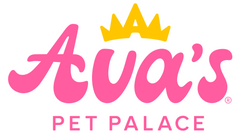Engaging Your Unique Pet: Fun Beyond Toys and Chews
At Ava's Pet Palace, we understand that every pet has its own unique personality and preferences. While many dogs might leap at the chance to chase a ball or gnaw on a chew toy, others, like my own dog Lacy, march to the beat of their own drum. Lacy isn't interested in what many would consider 'traditional' dog activities. She doesn't care for toys, has no interest in chasing balls, and chews are simply not her thing. Yet, she's a joyful soul, eager for fun and always ready for an adventure. It's through Lacy's eyes that we've come to appreciate the variety of ways we can engage with our pets, ensuring they're happy, stimulated, and living their best lives. Here are some innovative and fun alternatives to traditional pet play:
1. Exploring the Wonders of Snuffle Mats
One of Lacy's all-time favorites is the snuffle mat. We hide treats within its folds, and she absolutely loves sniffing them out. This activity not only keeps her mentally stimulated but also satisfies her treat motivation. It's a fantastic way to engage pets who might not be toy or play driven but are motivated by their incredible sense of smell.
2. Interactive Games and Puzzles
For the thinkers and problem-solvers, interactive games and puzzles designed for pets can be a game-changer. These activities challenge their minds, keep boredom at bay, and reward them with treats for their efforts. From simple puzzles that require them to lift or move pieces to uncover rewards to more advanced challenges that test their problem-solving skills, there's a whole world of cognitive play awaiting.
3. DIY Agility Courses
Not all pets enjoy running after a ball, but they might revel in the physical and mental stimulation of an agility course. You don't need fancy equipment; with a little creativity, you can set up a fun course in your backyard using everyday items. Guide your pet through the course, encouraging them with treats and praise. It's not just about the physical activity but the bonding experience that comes with it.
4. Nature Walks and Hikes
For pets who might not be toy-driven but love to explore, nature walks or hikes can be incredibly fulfilling. It's a chance for them to engage with the world in a sensory-rich way, taking in the sights, sounds, and smells. For our four-legged friends, these walks are about more than just physical exercise; they're an exploration of the world around them.
5. Learning New Tricks or Commands
Who says you can't teach an old dog new tricks? Learning doesn't have to be motivated by toys or play. With the right approach and some tasty treats, you can teach your pet new tricks or commands. This mental stimulation is not only rewarding for them but also strengthens the bond between you.
6. Creating a Pet-Safe Garden
Creating a garden where your pet can safely explore, sniff, and nibble is like opening a door to a whole new world for them. This sanctuary is not just about the beauty it adds to your home but the sensory experiences it provides for your pet. Here’s how you can create a pet-safe garden:
-
Choose Pet-Friendly Plants
Start by selecting plants that are safe for pets. Non-toxic flowers such as roses, sunflowers, and petunias, along with pet-safe herbs like basil, rosemary, and thyme, are excellent choices. These plants not only add beauty and variety to your garden but also ensure that if your pet decides to take a little taste test, they’ll be perfectly fine.
-
Engage Their Senses
Consider incorporating elements that will engage all of your pet’s senses. Lavender can be soothing to smell, while tall grasses make gentle, calming sounds as the wind passes through them. A small water feature can provide both visual interest and a cool place for your pet to drink from or play in during warmer months.
-
Create Paths for Exploration
Incorporate pathways in your garden design to encourage exploration. These can be made from pet-friendly materials like smooth pebbles or flat stones. The idea is to create an inviting space for your pet to wander, sniff, and explore. These paths can lead to different areas of interest within the garden, such as a shaded rest area or a sunny spot perfect for basking.
-
Incorporate Interactive Elements
Consider adding features that your pet can interact with. For dogs, this might include a digging box filled with safe, non-toxic sand or soil. For cats, a catnip corner or a sturdy scratching post wrapped in sisal rope can provide a perfect spot for stretching and scratching. These elements encourage natural behaviors and provide a healthy outlet for energy and curiosity.
-
Safety First
Always ensure that your garden is a safe space. This means using non-toxic fertilizers and pest control methods, ensuring that the area is securely fenced, and removing any potential hazards that could harm your pet. Regularly check the garden for any plants that may have grown in or been brought in that are not pet-safe.
We believe that every pet deserves to have fun, feel loved, and be engaged in a way that suits their unique personality. Lacy taught us that there's more to pet play than balls and chews. It's about understanding what makes your pet tick and finding creative ways to enrich their lives. We hope these suggestions inspire you to explore new activities with your pet, ensuring they're happy, healthy, and engaged.
Remember, the best adventures are the ones we share with our pets. Let's make every moment count!

